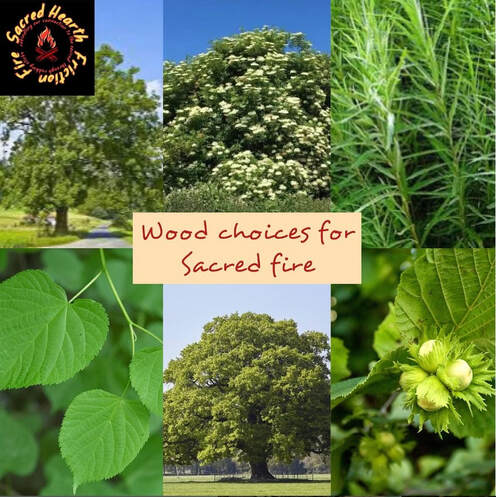 Wood choices for sacred fire… I don’t mandate any particular wood - what is important for me personally is:
1-it’s native to where I am 2- preferably it’s sourced local to where I am welcoming fire (if at all possible) 3-it’s been collected from fallen/dead standing wood or it’s overly abundant and has been harvested sustainably My preferred wood for bow drill in ritual is English Oak which has been collected from wind fallen branches. Hazel is my favourite tree and loves having fire coaxed from her and commonly sheds branches. For sacred/ritual practice I collect my wood in advance and season There are lots of combinations for bow drill and it can be a personal choice.I also make my own cordage usually from nettles With Neid Fire I am working on a larger scale and so I am reliant on what I can find which has naturally fallen - I have Hazel and Ash spindles and Hazel and Poplar hearth logs and Holly for the bearing log. I kept/keep scouring the woods to find suitable fallen branches/trees.And for Neid Fire you need to collect in advance and season Traditionally Oak was used for Neid fire but it is very difficult to find suitable fallen oak and I would NEVER cut a live Oak for my own purposes and I DO NOT advocate cutting live Oak. For the fire wood - for me it is importent that it is native, local (if poss) and collected from fallen wood and is a good burning wood and is dry - I commonly use hazel and/or birch first (fast burning) then ash or seasoned oak. Again I collect in advance and season. (These woods are all native and local to me) The sourcing, collecting and preparing the wood is a huge part of my friction fire practice which I endeavour to do with awareness and respect and gratitude -for neid fire it can take several months I’m blessed in that I live next to woods with Hazel, Oak, Elder, Ash, Hawthorn, Elm, Poplar, Willow, Tilia, Ivy, Clematis 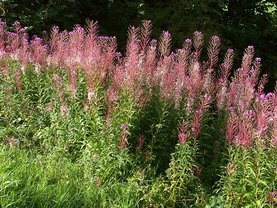 Rosebay Willowherb Rosebay Willowherb Autumn is here! A great time to get out in nature and harvest materials for friction fire! A key part of friction fire, is identifying and collecting suitable materials. Some people pride themselves on gathering the materials on the spot in the wild and others prefer to collect their's in advance (or a bit of both.) It does help to learn about what works and identification of species (handy pocket guides are useful.) It's also useful to understand burning qualities of wood - what burns quickly, slowly, smokes etc (see knowing-your-firewood.html.) I've also found that I'm always on the lookout for materials, and sometimes I find them in unexpected places such as car parks. So even if you live in a city, you'll be surprised at what you can find in often unusual places. I am lucky to live near to amazing open green spaces that have diverse habitats including woodland, meadows, rivers, and ponds, which provide me with everything I need. Unfortunately this year, 2018, Bristol Council have started being more brutal in cutting vegetation back so I'm having to hunt out certain materials including Rosebay! Where possible I prefer to use materials native and local to where I am. Please do forage with responsibility and put nature before your needs! It is best to collect dead standing\fallen wood as this is best for friction fire rather than cut green wood. If you need to cut green wood (e.g. Elder spindles) try to only cut a couple from one tree, use a diagonal clean cut (do not snap) and don't cut flush to the branch it is sprouting from. For plants (e.g. teasel and mullein) you'll need to wait until Autumn once they have seeded before you can cut (they won't season like wood anyway) and if they still have seeds then shake them to scatter the seeds and cut the seed heads off in situ. It's always wise to use discretion (especially in public places) and don't take too much at a time. Here are some materials which work really well for me: Bow Drill Spindles
It is best to select the straightest possible rather then trying to straighten out. If they are still a little wonky then straighten and tie to a broom handle, using elastic bands etc, while still green and drying.
Tinder - most tinder materials are best collected dead and dry it out.
Store everything away dry and in a dry place.
And keep those eyes peeled, it's amazing where you can find materials! Caution-Ticks! Also be aware of ticks (which can pass on Lymes disease.) If you are in places frequented by Deer (especially if in long grass \ bracken) then check yourselves thoroughly (and best to wear long socks, long sleeves, trousers etc) and use Tick removal tools to remove any as soon as possible. Happy responsible foraging! Here is a short film of me foraging for materials, and making a bow drill set from scratch, which I then attempt to tempt an ember from the wood, and welcome in the fire. As can be seen, sometimes it takes a few attempts.... There is a perception that friction fire prefers dry conditions. Admittedly it is far easier in dry conditions and not all woods like dampness and I can't use the hand drill with damp wood and I'd prefer the dry any day! However, It can be possible with some wood species which are damp using the bow drill. I'm not saying you can do it with soaking wet, soggy all the way through wood but it can sometimes be possible with damp wood as I've tested recently. Of course, if it's chucking it down with rain you need to get into a sheltered spot and of course you need dry tinder and wood. Personally I prefer to carry everything I need with me but if you have the knowledge, it can be possible but a bit more prep may be needed (e.g. making feather sticks etc, using tinder fungus.) It's best to try and find dead standing wood with bark on as rain runs off it and it doesn't get as wet as wood on the ground or horizontal wood.
As an experiment I soaked a freshly made hazel drill (without bark) and an Ash hearthboard in water for over half an hour then I made a fresh hole and attempted to tempt an ember out. I had wiped off the excess water first and the wood was still damp, however the friction dried out the wood and I was able to tempt out an ember. It took a little bit longer than with dry wood, and the drill did slip a bit at first. The top of the spindle did suffer a bit and bits broke off due to the moisture but the bottom end worked well. Of course, out in the woods, it'll more difficult especially if raining as you'll need to try and be sheltered and keep your hands and your kit dry etc and you'll want to try and place the hearth on something dryish and try not to drip all over it! The wood also needs to be suitable. e.g right deadness, not green. And some woods ay not work in the damp. A wood like ivy may bot work as that soaks up moisture but woods like dead standing hazel ashould hopefully work in the wilds. |
Archives
January 2024
Categories
All
|
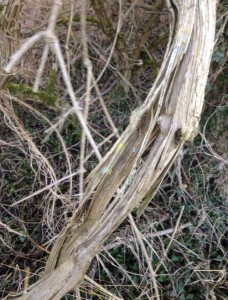
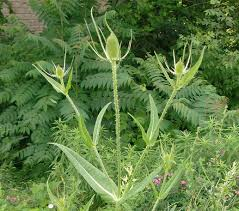
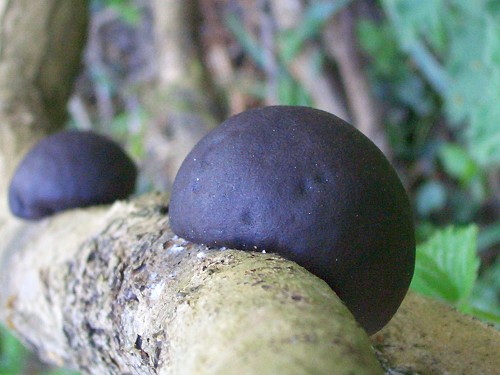
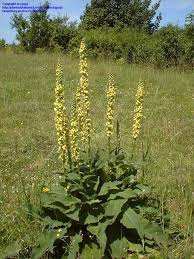
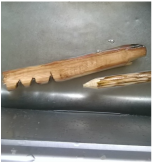
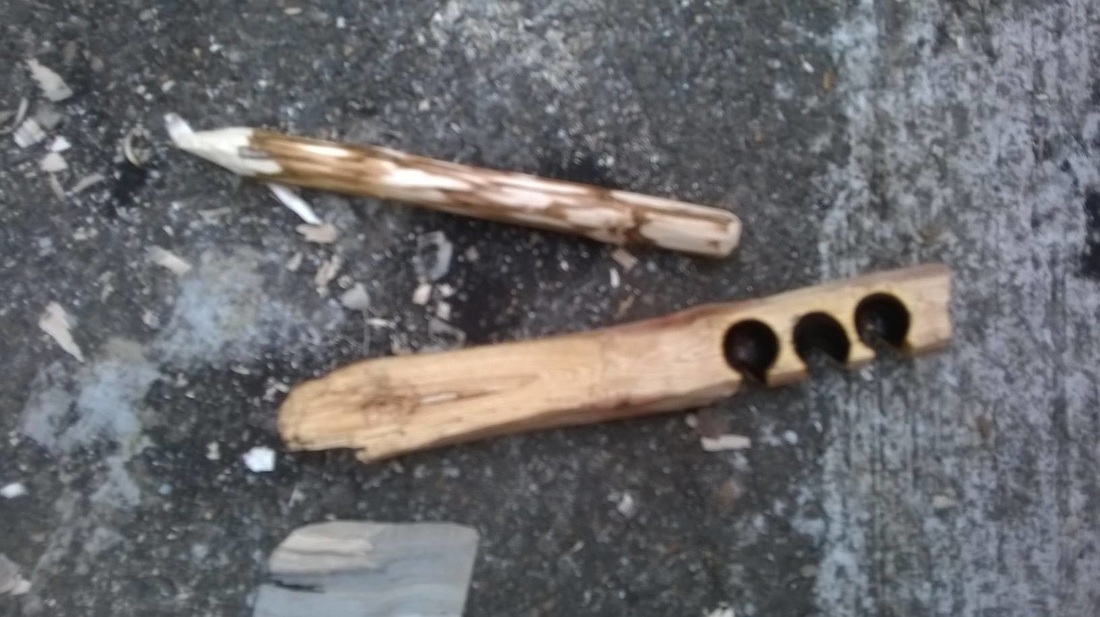
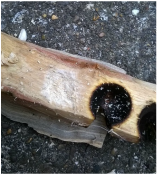
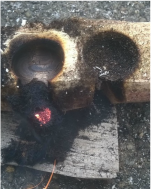
 RSS Feed
RSS Feed